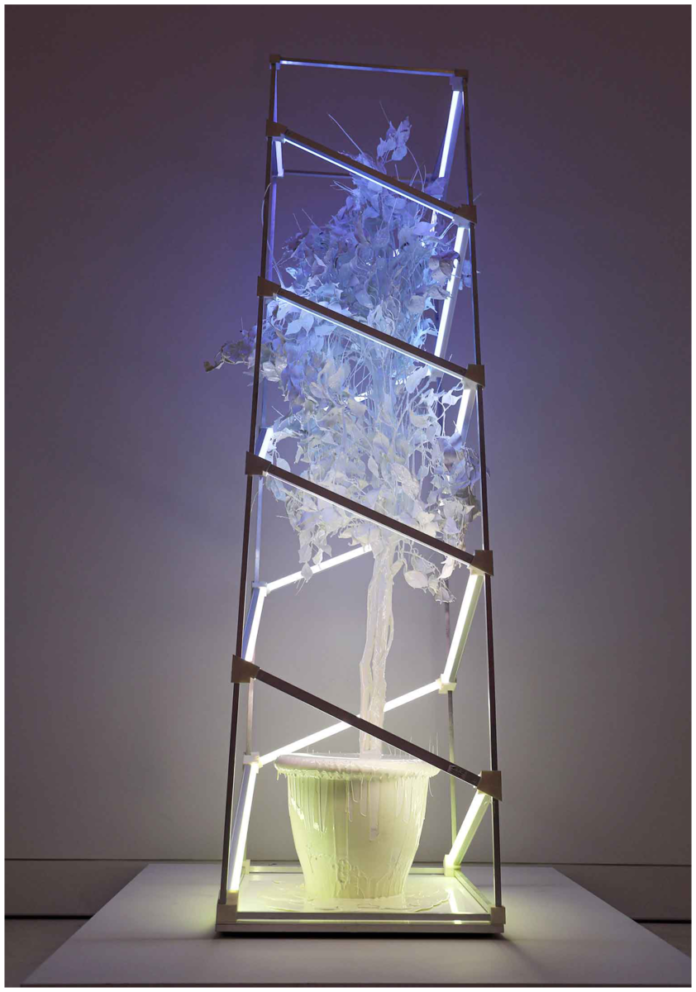RIYADH: For 17 days, the city of Riyadh will be transformed into an open-air art gallery with more than 33 light installations across the Kingdom’s capital.
Noor Riyadh, the mammoth festival of lights, inaugurated its first edition on Thursday, March 18, in the midst of the global pandemic. This pivotal creative event aims not only to celebrate the breadth of artistry exemplified through the work of the over 60 participating international and Saudi artists but also the advent of the Kingdom’s push for a greater creative economy.
On the grounds of the Cultural Palace in Riyadh’s prestigious Diplomatic Quarter is a lone pop-up coffee shop — emblematic, one could say, of Saudi Arabia’s popular pastime. Yet there is something different about this particular coffee bar. Poetic Arabic phrases cover the pop-up’s exterior, illuminated in a soft glow. When translated into English, they read: “I am the one coming from the dreamy city. What should I write?”
Titled “Ricochet,” the pop-up is a light artwork by the youngest artist in the first edition of the festival, Nojoud Al-Sudairi, who addresses public space through Arabic poetry. When visitors grab a cup of coffee, the cup itself is covered with poetic phrases, such as “In your land, generosity, always” or “I have no other place.” Al-Sudairi’s performative architecture installation is very much rooted in the present time and the effects of the pandemic on city life.
During Riyadh’s quarantine, Al-Sudairi, 26, collected haikus, a Japanese poetic form, and deconstructed phrases from letters written by residents of Riyadh to their city. Additional luminous signs from “Ricochet” can be found around the city, extending the artwork across Riyadh’s eclectic urban landscape.
“My work started during the pandemic as a research project into how Riyadh residents interacted with their city during quarantine,” said Al-Sudairi. “I began asking people I know to send short phrases on how they were seeing the city through their windows, and this gave me the idea to incorporate literature into the project through signage around the city.
“The result was a visual essay on how signage in Riyadh was becoming the interface of the city. Driving through the streets in Riyadh at night, one can see how the city has become an experience of this electric landscape, of all of these words and sentences forming odd pieces of abstract poetry.”
Until April 3, the city of Riyadh will be transformed into an open-air gallery, illuminated by large-scale light installations. As Raneem Farsi, the Saudi curator of the exhibition, notes, what makes the exhibition dynamic is “that Noor Riyadh has included numerous Saudi artists, many of whom have been commissioned to make pieces especially for the exhibition.”
HIGHLIGHT
On the grounds of the Cultural Palace in Riyadh’s prestigious Diplomatic Quarter is a lone pop-up coffee shop — emblematic, one could say, of Saudi Arabia’s popular pastime. Yet there is something different about this particular coffee bar. Poetic Arabic phrases cover the pop-up’s exterior, illuminated in a soft glow. When translated into English, they read: ‘I am the one coming from the dreamy city. What should I write?’
The artworks, which encompass a range of media, including music, sculpture and performance, can be found in two main areas: The King Abdul Aziz Historical Center and the King Abdullah Financial District, where visitors can also view “Light Upon Light,” an exhibition of light art from the 1960s to the present, which is on view until June 12.
While the global art community will have to view the artworks virtually, Saudis have already been flocking to the venues in record numbers.
“One of the most critical aspects of Vision 2030 is the flourishing of the Saudi creative economy, which we are trying to foster, and this is one of the main highlights of Noor Riyadh as a program,” Anas Najmi, adviser to the Royal Commission for Riyadh City, told Arab News. “Despite all of the challenges of the pandemic, we managed to give the experience to 15,000 visitors in just one day. Secondly, over 1,200 jobs were created as part of the Noor Riyadh festival, half of which are for Saudis.”
One aim of the festival is to attract visitors to sites in Riyadh that are not so often frequented, including the King Fahd National Library, the Diplomatic Quarter and JAX, the industrial zone of Diriyah.
“Light Upon Light,” the main exhibition, showcases a thorough survey of the history of light art through the display of works by leading international artists from the movement, including Dan Flavin, James Turrell, Lucio Fontana, Julio Le Parc and Robert Irwin, alongside contemporary art world superstars such as Urs Fischer and Yayoi. Also featured are the works of Saudi Arabia’s most prominent emerging and established artists: Nasser Al-Salem, Manal Al-Dowayan, Rashed Al-Shashai, Sultan bin Fahad, Dana Awartani, Maha Malluh, Ayman Yossri Daydban, Ahmed Mater, Ahmad Angawi, Abdullah Al-Othman, Sarah Abu Abdallah and Mohammed Al-Faraj.
“To my understanding, it is the first time that light art has been shown here in the Kingdom, and for that reason alone it is significant,” curator Susan Davidson told Arab News. “What is also significant is the impact I hope it will have on the people of Saudi Arabia. Art takes many different forms, and it can bring a level of well-being and joy into your life. This works very well with Vision 2030 in terms of making Riyadh in particular a very viable and livable city.”
Light works by Saudi artists reference both Saudi’s ancient past and its present through conceptual forms. For example, Sultan bin Fahad’s “Once Was A Ruler” (2019) is a series of composites from his photography of ancient sculptures of monarchs from the ancient Arabian kingdom of Lihyan, merged with his own bodily X-rays. Abdullah Al-Othman’s “Casino Al-Riyadh” (2021) takes the form of a neon-colored sign that imitates the unique anatomy of the city of Riyadh and draws inspiration from the lighted signage throughout the city. It also references former places for gathering in Riyadh.
Perhaps the most powerful marriage of old and new Saudi through the medium of light art can be found in Robert Wilson’s piece “Palace of Light” (2021). The work consists of two parts: Multiple performative light elements that dress the landscape of At-Turaif — the historic district of Diriyah and first capital of the Saudi dynasty dating back to 1766 — and a large copper dish placed in front of the palace that, when the light performance is played, seems to be rising out of the sea as the curved edges of Diriyah’s mudbrick structure is covered with projected images of moving waves.
The emotional performance was quickly consumed and widely shared on social media platforms, giving the world a taste of the brilliance of Noor Riyadh. As Davidson said: “Many things get around in the art world through whispers. Even those who could not attend this monumental show will hear about it.”
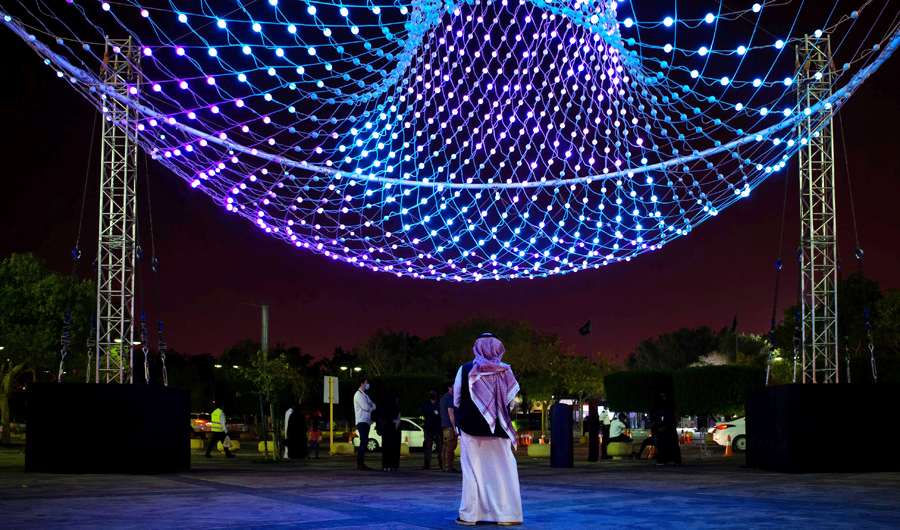

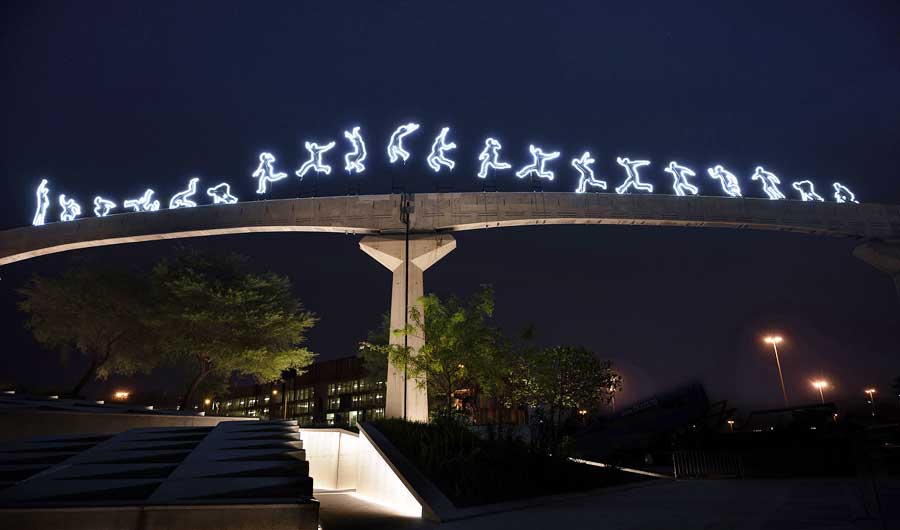
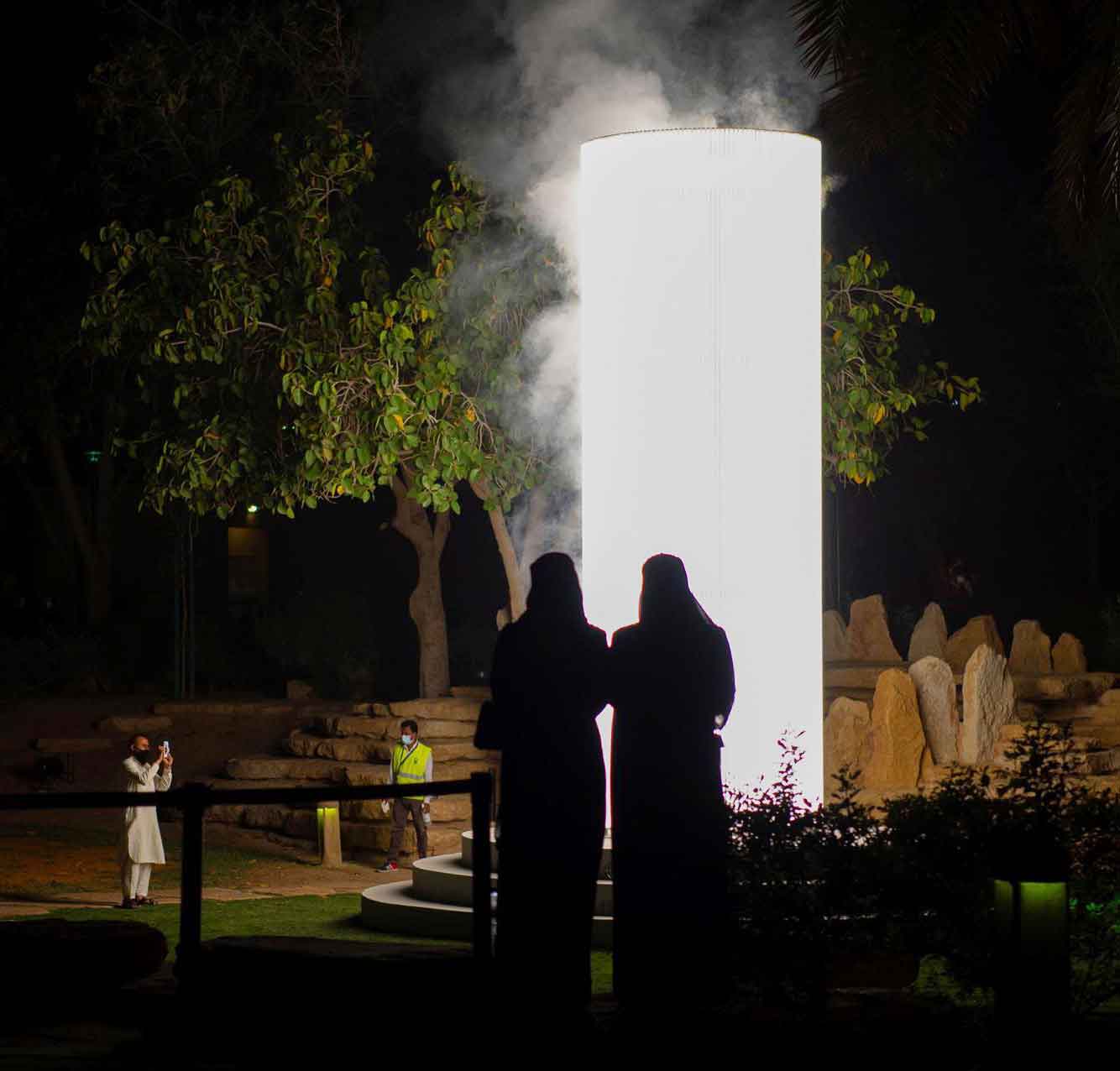
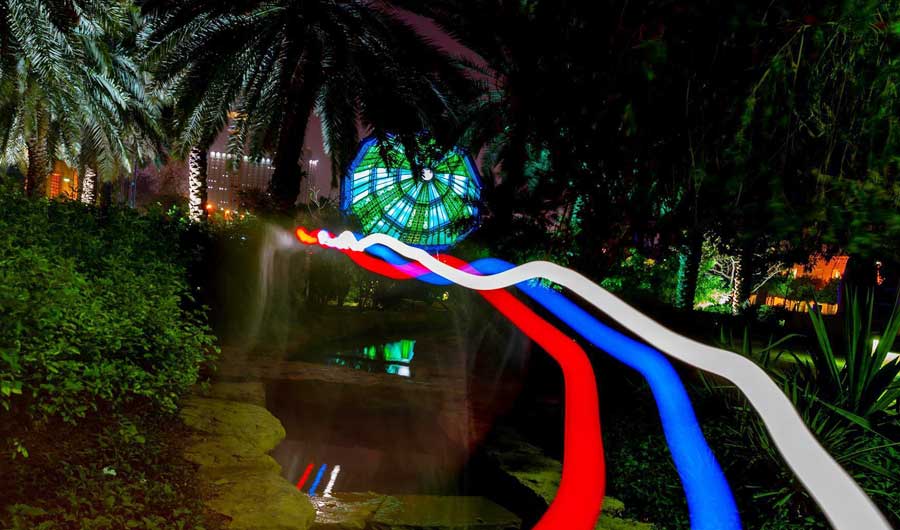
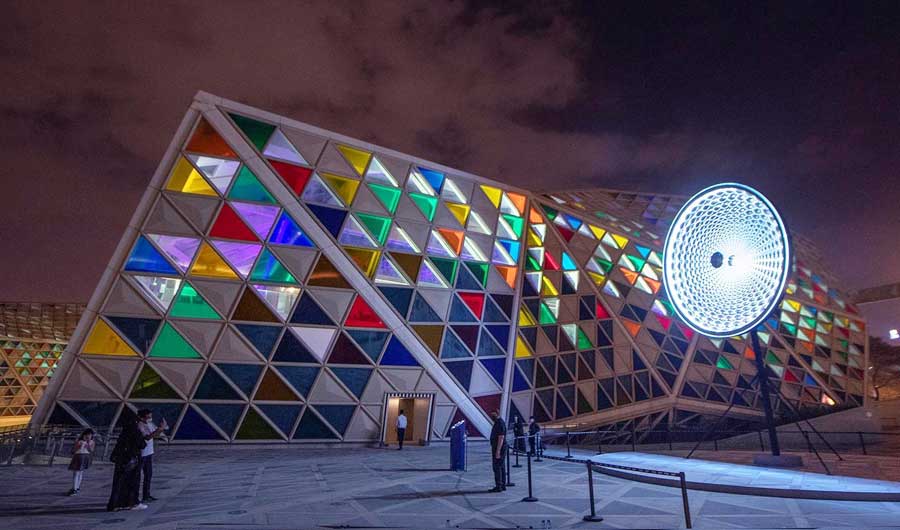
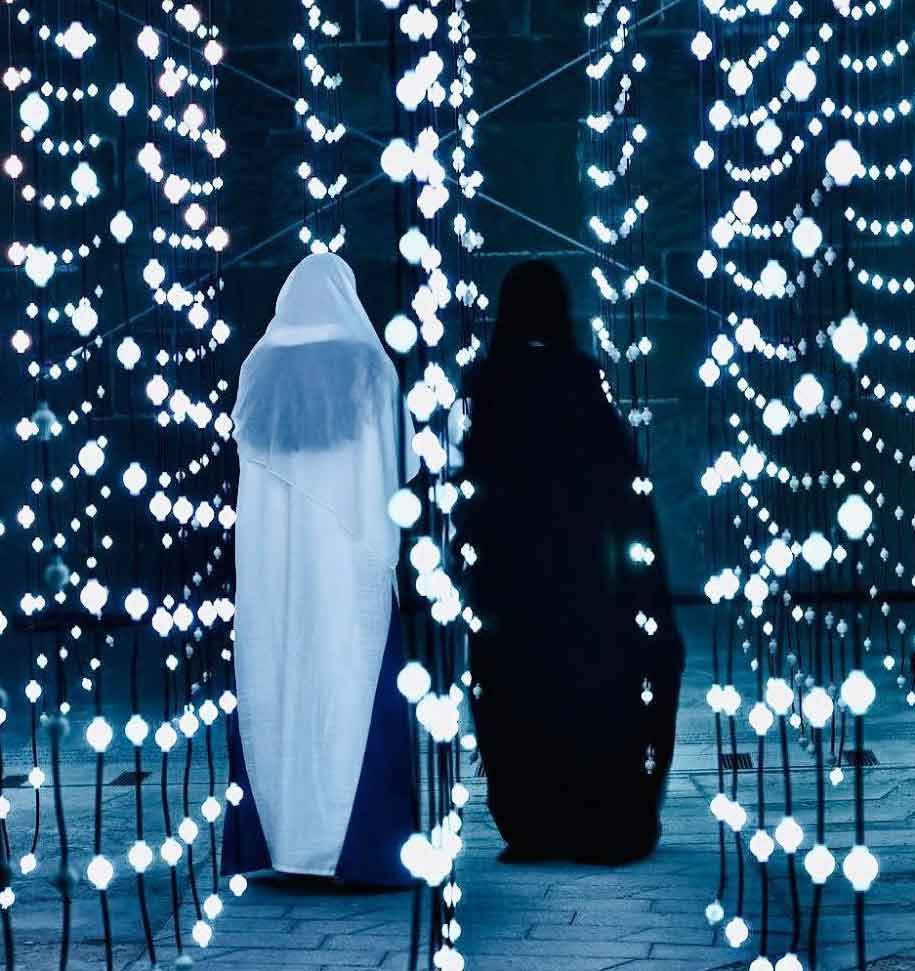
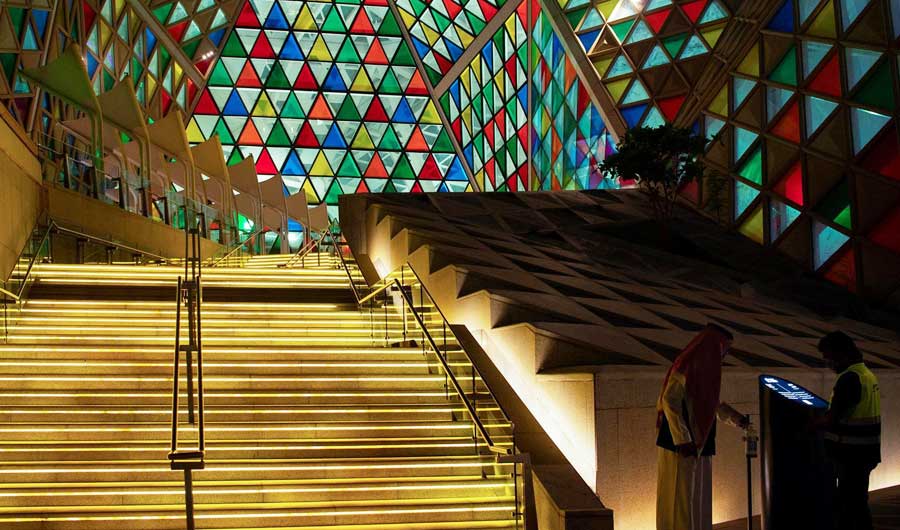
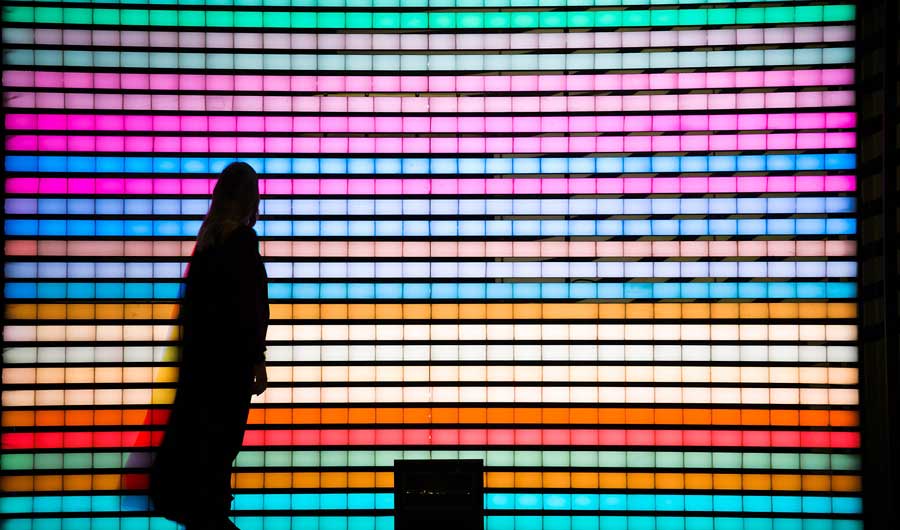
Noor Riyadh festival lights up Saudi capitalFirst meeting of ‘Riyadh Initiative’ held in Saudi Arabia with UN body

